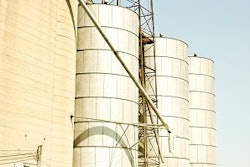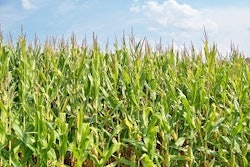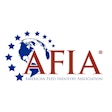Russia’s independent feed manufacturers will continue to face market share decreases over the next few years as large integrated livestock operations continue to grow, predict forecasts from the leading Russian agricultural institutes.
According to Elena Turina, general director of the Institute of Agricultural Marketing, in 2015 independent feed mills will enjoy good market conjuncture amid temporary growth of livestock production at small- and medium-sized farms. However, in the future, their market share will likely continue to decline just as it has over the last few years.
The same vision has analysts of the Russian Institute of Conjuncture and Agricultural Studies (ICAR) saying consolidation is the future of the Russian feed and livestock industries. This trend may leave independent feed mills “destined for extinction.”
Industrial production gains market share
In Russia, industrial production is defined as meat and livestock produced by an agricultural holding, which operates in vertically integrated capacities in the area of cultivation of grain, production of feed, breeding of animals, processing and the sale of finished product.
In 2015, Russian industrial farming increased from 71 to 92 percent in the poultry market; and from 33 to 68 percent in the pork market, causing non-industrial production to experience a rapid decrease in market share.
At the same time, the Russian government has implemented a livestock import substitution program, which provides state support to new investment projects in the area of livestock production. This has resulted in a temporary hike of demand for feed production, which this year may jump by 17 to 19 percent, according to numerous forecasts.
The rise of the integrators
According to Turina, 90 percent of all Russian agricultural holdings have their own feed production capacities. Last year Russia produced 23 million tons of feed. (See Table 1)
According to the Institute of Agricultural Marketing estimation, Russian agricultural holdings have the feed production capacity to be 78 percent self-sufficient.
“In recent years the largest players have been investing in increasing their land bank,” states Turina. “This protects them from price fluctuations in the domestic grain market.”
Relatedly, according to an ICAR report: “The creation of a complete industrial chain for the production of meat products immediately proved its advantages for the corporate sector in Russia. So now it is impossible to submit a business plan for any new project in the livestock industry without ensuring that it will have its own feed base — and almost all holding here have to develop its own crop base.”
Agricultural holdings in action
According to Turina, compound feed production accounts for nearly 70 percent of the cost of meat production in Russia. For companies fostering their own grain and feed base, it’s a matter of competitive fight.
“We see liquidation, outbidding of small businesses and consolidation of the companies, which lead to the emergence of vertically integrated holdings,” says Ludmila Khoroshevskaya, chief technologist of the poultry plant VitOMEK. “These companies are not fighting for survival, but for competitiveness.”
As stated, development of their own feed base has allowed companies to decrease their poultry production costs by 10 to 15 percent.
“Integrated production of feed seems most efficient today,” says Turina. “Investors can completely control the cost of feeding, while owning the raw material base allows them to maneuver with the formulations to avoid price risks, to reduce logistics costs as well as to conduct sufficient quality control of feed, which let them improve conversion.”
In her opinion, for independent feed mills to survive, they will have to strengthen their relationships with production cooperatives and small farmers.
“Such [producers] may be the consumers of independent feed mill products, but we have to admit that the demand for their products will continue to decline, and in future we will not have any independent feed production industry in the country,” she concludes.
Too soon to tell
At the same time, many experts note that Russian livestock and feed markets are currently going through major changes and it is too hard to predict how it will look in the years ahead.
Independent plants can significantly help growing agricultural holdings in the current market conditions, believes Sergei Vlasov, head of the BASF feed additives for Russia and the Commonwealth of Independent States (CIS).
“Many companies have dramatically increased the production of meat and now they do not have their sufficient feed production capacities,” he says. “In recent months, independent feed mills have received the demand, which they were not even counted for. The future of the market will get clearer in two to three years, but if agricultural holdings continue consolidating, the independent feed mills most likely would cease to exist.”
Market size difficult to determine
Experts also pointed out, that today Russian independent feed mills produce about 11 million tons of feed production, which is equal to 40 percent of the whole market. However, the actual size of the Russian market can be larger as a percentage of meat producers, which have their own capacities, don’t declare compound feed production.
This means the share of industrial feed production could actually reach 70 to 75 percent.
“The volume of production by independent feed mills will decrease by nearly two times within the coming five years,” comments Russian agricultural analysts Eugene Gerden. “This doesn’t mean that we will see the bankruptcies of mills. On the contrary, given the current development of livestock industry, this type of business seems quite profit-making.”
“But many of the feed plants which are independent today will loose such status in coming years, as they will be purchased by large players,” he explains. “We see five to six such deals for large mills each year and several dozens for smaller producers. Many new projects for the launching of independent feed mills are designed to be sold to large players, when the facility will reach full production capacity and price will be appropriate.”
Diversification poses challenges
Dmitry Ostroushko, CEO of Ramonskay Turkey, notes that it is hard for independent feed mills to produce feed to meet the needs of a large category of consumers.
“Most of them have their own standards in terms of nutrient composition and consistency and it is very hard to produce feed for large number of small livestock manufacturers,” Ostroushko explains.
To meet the demand, the large agricultural holding companies, such as Eurodon and Agropromkomplektatsiya, have opened several new feed mills. In August of 2015, Cherkizovo is scheduled to launch a large feed mill in Voronezh Oblast. In total this year at least nine different agricultural holding in the country have plans for conduction of expansion of their feed production capacities.











